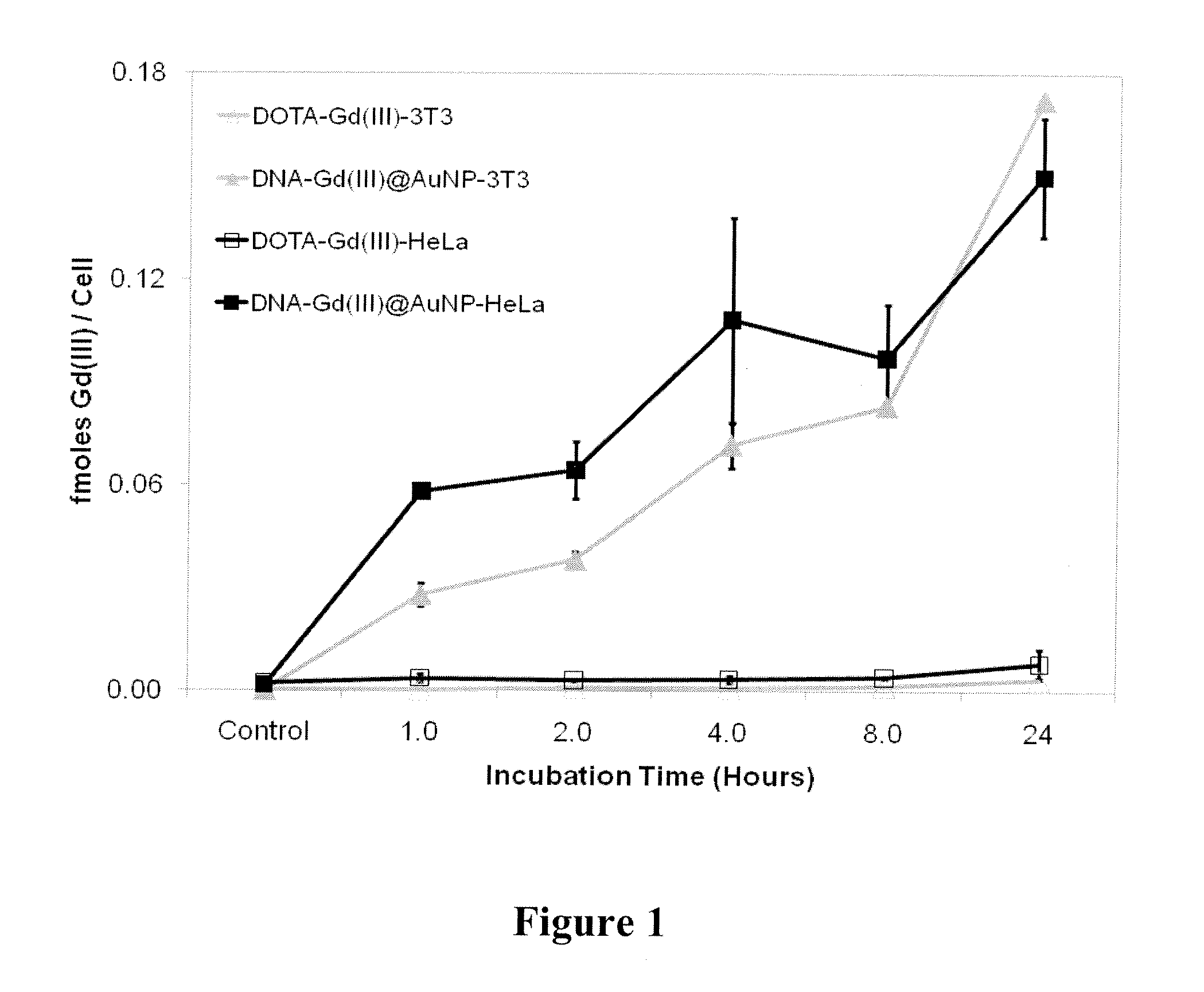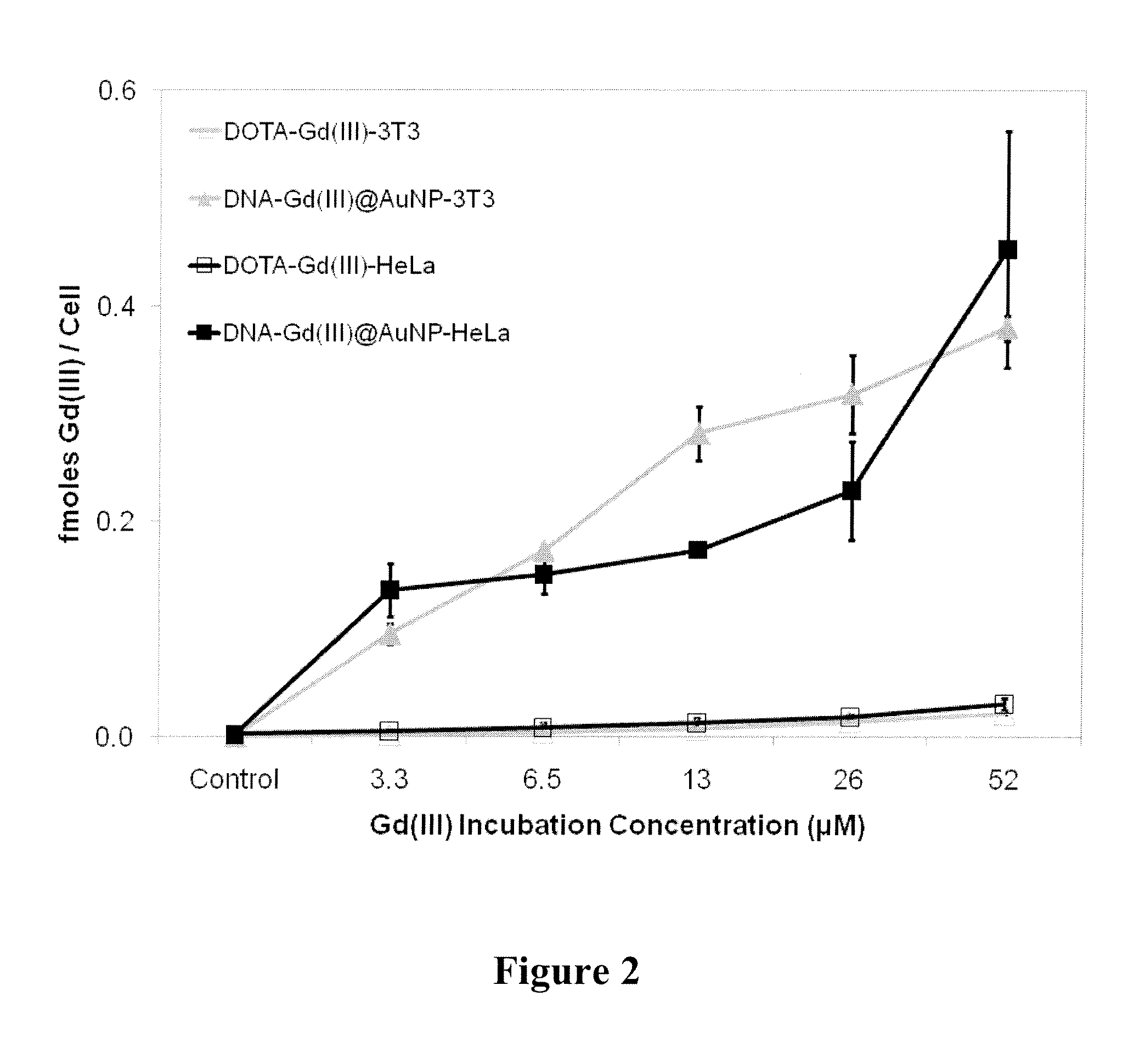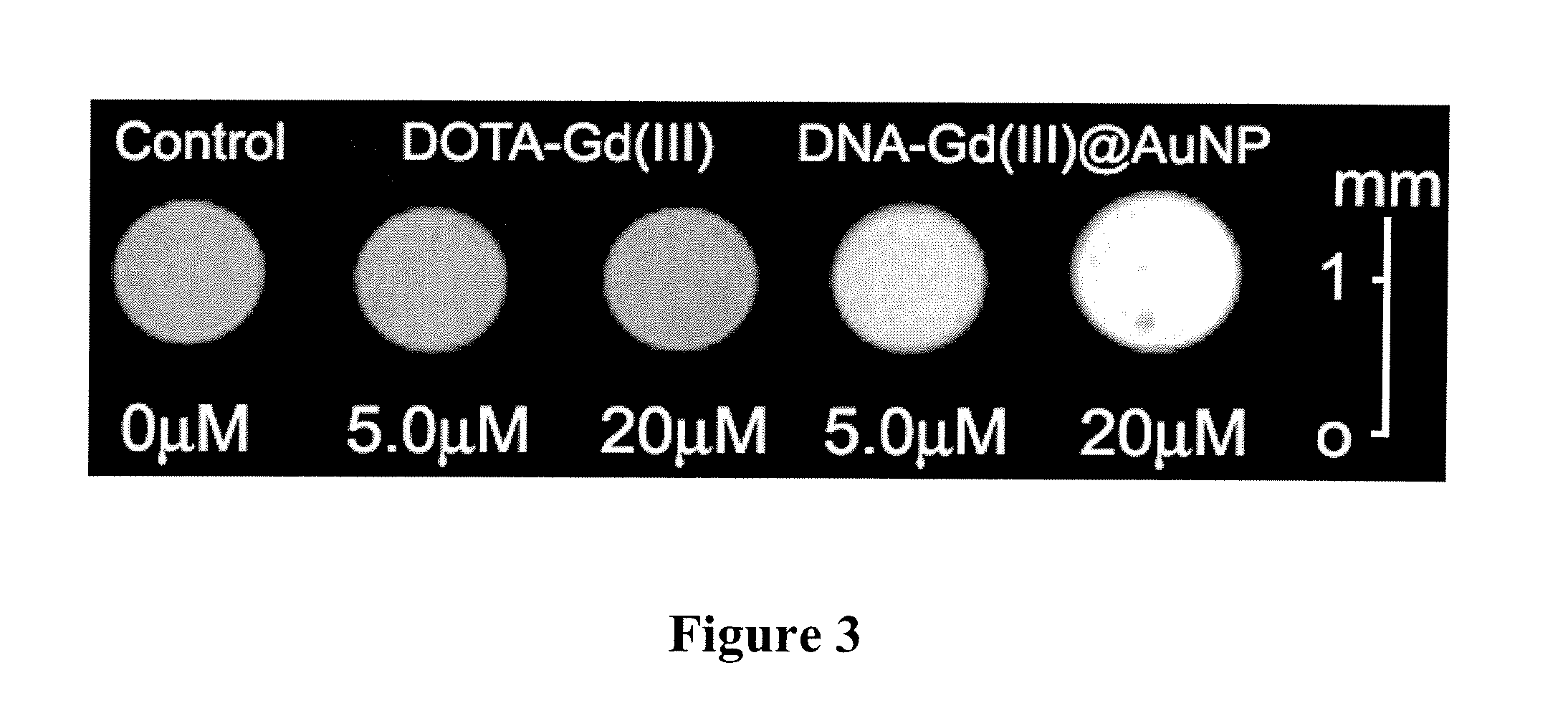Intracellular Delivery of Contrast Agents with Functionalized Nanoparticles
a technology of functional nanoparticles and contrast agents, applied in biochemistry apparatus and processes, organic chemistry, sugar derivatives, etc., can solve the problems of limited use in molecular imaging and cell tracking experiments, agents are incapable of penetrating cells, etc., and achieve the effect of increasing the relaxivity of contrast agents and increasing cellular uptak
- Summary
- Abstract
- Description
- Claims
- Application Information
AI Technical Summary
Benefits of technology
Problems solved by technology
Method used
Image
Examples
example 1
Preparation of the Nanoconjugate
[0168]Nanoparticles. Citrate-stabilized AuNPs (13±1.0 nm diameter) were prepared as described previously. AuNPs of 30 nm in diameter were purchased from Ted Pella Inc (USA). Polynucleotides were synthesized on an Expedite 8909 Nucleotide Synthesis System (ABI) by standard solid-phase phosphoramidite synthesis techniques. All bases and reagents were purchased from Glen Research. The polynucleotides were purified using reverse-phase high-performance liquid chromatography (RP-HPLC) using a Varian Microsorb C18 column (10 mm, 300 mm) with 0.03 M triethylammonium acetate (TEAA), at pH 7.0, and a 1.0% per min gradient of 95% CH3CN / 5% 0.03 M TEAA at a flow rate of 3 ml / min while monitoring the UV signal of DNA at 254 nm. After purification, the polynucleotides were lyophilized and stored at −78° C. until use. Before nanoparticle conjugation, the 3-disulfide functionality was reduced with Dithiothreitol (DTT) following published procedures.
[0169]Synthesis of ...
example 2
[0177]After purification by RP-HPLC, the DNA-Gd(III) conjugates were characterized by MALDI-MS, which confirmed formation of the conjugates. The DNA-Gd(III) conjugates were then immobilized on citrate stabilized gold nanoparticles (AuNPs) following literature procedures used to make the analogous Gd(III)-free NPs to yield DNA-Gd(III)-AuNPs (Scheme 2, below) [Storhoff et al., J. Am. Chem. Soc. 120:1959 (1998)]. Excess DNA-Gd(III) was removed by repeated centrifugation and resuspension of the NPs until the supernatant was free of Gd(III). When suspended in aqueous solution, the NP conjugates appear deep red in color due to the plasmon resonance of the Au at 520 nm, and they are stable for months at room temperature. Cy3-labelled DNA polynucleotides (5′-Cy3-TTTTTTTTTTTTTTTTTTTTTTTT-5H-3′: SEQ ID NO: 2, shown in Scheme 2) were synthesized for fluorescence microscopy and flow cytometry to confirm cell uptake and labeling efficiency, respectively.
[0178]Relaxivity (r1). To determine relaxi...
PUM
| Property | Measurement | Unit |
|---|---|---|
| mean diameter | aaaaa | aaaaa |
| mean diameter | aaaaa | aaaaa |
| mean diameter | aaaaa | aaaaa |
Abstract
Description
Claims
Application Information
 Login to View More
Login to View More - R&D
- Intellectual Property
- Life Sciences
- Materials
- Tech Scout
- Unparalleled Data Quality
- Higher Quality Content
- 60% Fewer Hallucinations
Browse by: Latest US Patents, China's latest patents, Technical Efficacy Thesaurus, Application Domain, Technology Topic, Popular Technical Reports.
© 2025 PatSnap. All rights reserved.Legal|Privacy policy|Modern Slavery Act Transparency Statement|Sitemap|About US| Contact US: help@patsnap.com



